
Today’s guest post is from Martha Conway (@marthamconway), award-winning author of Thieving Forest and Sugarland.
For the past year or so, I have been hearing about the effectiveness of Facebook ads around the social media water cooler. As an author with three novels published and a new one scheduled to be released next year, I try to get the word out about my work as much as possible.
I’ve tried Amazon ads and Google ads with very limited success (neither one paid out, but they increased awareness of my books—I hope). The conventional wisdom in book publishing is that ads aren’t an effective way to increase sales unless the author is mega-successful already, and my experience with Amazon and Google advertising seemed to confirm that.
However, I couldn’t ignore the many people I respected who seemed to think Facebook ads were worthwhile. And I told myself that perhaps the Facebook platform was more controlled, and possibly more targeted, than Google. So I took the plunge.
Wow. What a roller coaster ride. I went from thinking This is the greatest piece of promotion I’ve ever done to thinking I might as well have burned that fifty dollars in my backyard Weber.
It wasn’t all bad, because I figured out where I went wrong after a few days and adjusted my ad settings. But if it weren’t for my husband, who works in the advertising industry, I probably never would have figured it out.
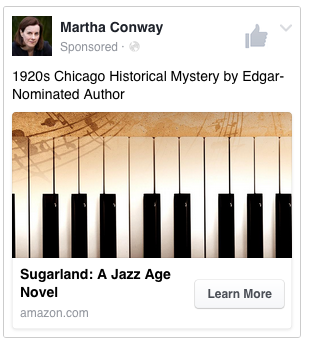 To start with, I’ll go through how I set up my ad campaign—an ad for my latest novel, Sugarland. After that I’ll pinpoint where I went wrong, so others can avoid the same mistake.
To start with, I’ll go through how I set up my ad campaign—an ad for my latest novel, Sugarland. After that I’ll pinpoint where I went wrong, so others can avoid the same mistake.
Facebook is pretty good at walking newbies through the process of setting up an ad campaign. Once I selected “Create Ad,” I was immediately taken to a page that asked, “What’s Your Marketing Objective?” I chose “Send people to your website” (i.e., the Sugarland page on Amazon).
Then I created a custom audience, trying to make it as specific as possible, which I had read was good practice. I targeted an audience who was in and around the Chicago area, as my novel takes place in Chicago, 1921. I limited it to women (who generally buy more novels, especially historical novels); I set the age from early twenties and up; and I targeted those with interest in mysteries, literature, fiction, jazz music, reading ebooks, and a few other interests and behaviors.
I also set my daily budget and set a schedule for seven days.
So far, so good. But there was one more step in the Facebook campaign specs process: to choose my ad’s “Placement.” Here is where things went seriously wrong.
As you can see by this graphic—a screenshot of the “Ad Set” page where you set your preferences—Facebook really encourages you to select the “Automatic Placements” choice.
Not only is it specifically recommended, but there is also a kind of advertisement for it right in the category box (“New! Automatic Placements”). The description sounds good: “Your ads will automatically be shown to your audience in the places they’re likely to perform best” and “We’ll optimize delivery to show your ads to your audience in the best-performing places.” So I selected that option.
It turned out that this was the wrong move, but more on that later.
On the next screen I uploaded an image for the ad, wrote the headline and a few words of text, and I was good to go.
The first day and a half was exhilarating. Almost immediately I was getting a far greater number of clicks (users who clicked on my ad and were taken to the Amazon book purchase page) than I believed possible. The ad went live late on the evening of September 5, and on September 6, the first full day of advertising, I received 166 clicks in one day. To give you some context, most of my Amazon or Google ads received only about 100 clicks over the course of one week.
Not only was the number of actual clicks enormous, but the click-through rate (i.e., clicks divided by impressions) was 5.34 percent, whereas my ads on Amazon or Google typically had click-through rates of 0.46 percent. Here the Facebook click-through rate was over ten times higher—to industry experts this would be a red flag, but I just thought it was great.
Checking my Kindle sales page for that day, however, I saw that, for all those clicks, I had sold only two books. Not great, but the ad campaign had just begun.
On September 7 my ad received 157 clicks, and on September 8 it got 172 clicks. Of course, each of those clicks cost me money (approximately $0.12 per click), but hopefully they resulted in some sales. If these ads performed as well as Amazon ads (and Amazon is able to calculate approximate sales their ad campaigns generate), I would expect at least five book sales each day.
But I didn’t get that. Nothing like it. Although in August Sugarland had been selling something like two or three books per day, by some fluke of circumstances there were zero sales on September 7 and September 8. Not a one.
I had been crowing to my husband about all the clicks I had been getting (500 by the end of day three!), and at first I rationalized the lack of sales—they just hadn’t shown up yet on my sales page for some reason. But by the end of day three I admitted that, as remarkable as all this activity was, it hadn’t resulted in any real purchases. My husband and I took a look at my “Ad Management” page on Facebook, and after some digging he figured out that most of my ads, and the resulting clicks, were showing up on something called “Audience Network.” Neither one of us knew what that meant.
To make a long story short, as we dug further, we realized that Facebook was showing my ad primarily on mobile devices. According to my husband, mobile devices have a much higher click rate while not delivering equally high purchase rates. There are a lot of guesses as to why. One possibility is that because of mobile devices’ small spaces, fingers slip and click when they don’t mean to. (I’ve certainly done that.)
But the other possibility is a bit more ominous. Some games on mobile devices use something called “incentivized ads.” An incentivized ad is when a user has an incentive to click on an ad because in doing so they will get something in the game they are playing—a cloak that allows a character to fly, a weapon, a cool piece of armor.
Incentivized ads are generally frowned upon by companies such as Facebook, and they most likely have a policy against them, but apparently these kinds of ads are hard to trace back. Most companies, Facebook included, will sell my ad to another party who will place it on some platform; or the second party might even sell it a third time to someone else. When my ad is finally placed on a device where a user can see it, it may be a long way from where I initially set it up.
And here I was thinking that my ad would only be seen on Facebook pages! Not so. My ad could be placed anywhere, on any device, on any page, where a pair of human eyes might see it. That is, unless I specify Facebook as the only platform used for my ad.
After we figured this out, I changed my settings in the “Ad Management” page to exclude mobile devices and specify only Facebook. Remember the “Automatic Placements” that Facebook recommends you select? Don’t select it! Here is what you do instead:
As you are setting up your ad specs, go to the “Ad Placement” selection. Under devices, choose “Desktop Only,” which renders the Instagram and “Audience Network” platforms ineligible. Alternatively, you could stay with “All Devices,” but then unselect “Audience Network.”
Once I did this, the click rate aligned with Amazon and Google ad click rates—about twenty clicks per day. Although I sold a book or two, the end results were not discernibly better than my Google or Amazon ads. However, the education was invaluable.

Martha Conway is the author of The Underground River, which was a New York Times Editor’s Book Choice, and features a neurodivergent character as the protagonist. She teaches creative writing for Stanford University’s Continuing Studies Program.

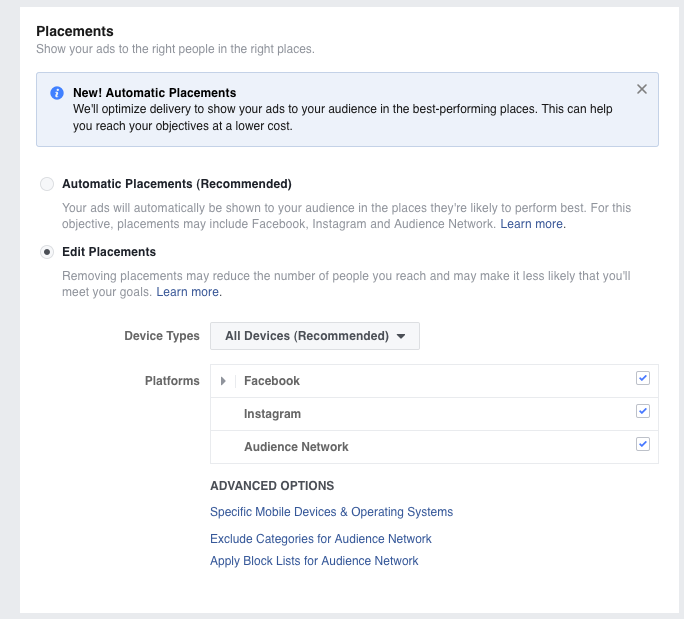
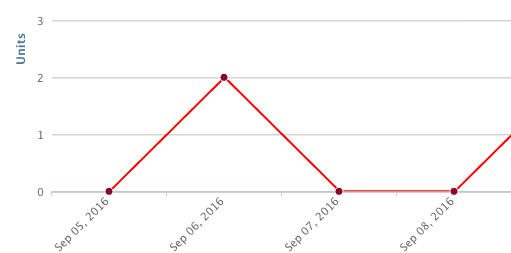
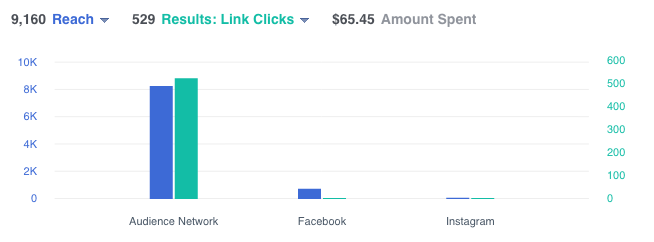
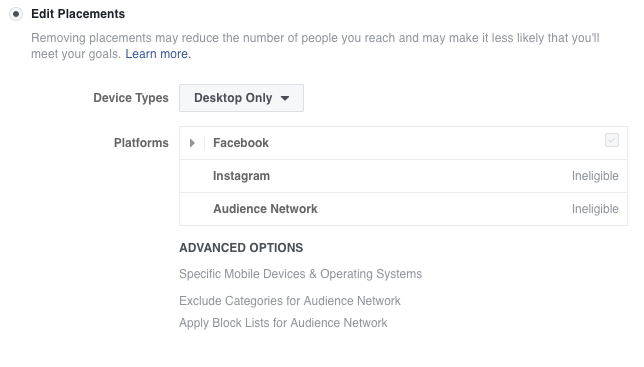
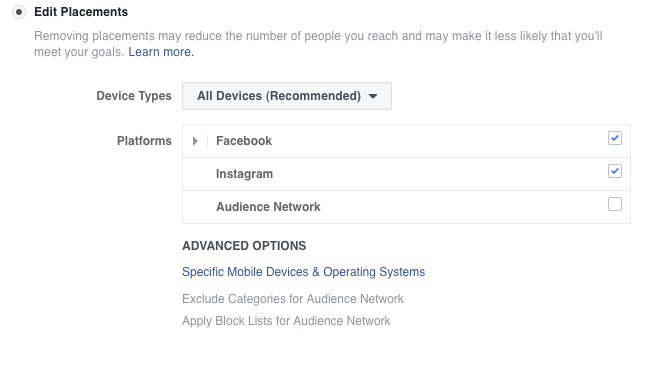
[…] view post at https://janefriedman.com/facebook-ads/ […]
Thanks so much for sharing your experience, as it explains why I had such a poor response when I tried the Fb ad route. Maybe next time I’ll have a better result.
I too ran a couple of shirt term ads(I own a small bike shop) and saw clicks on the ad immediately, However, the long term result was even though I ran ads and saw an increase of clicks to the ad/shop page… it created NO email/FB contacts, phone calls or shop visits. And unlike you, I never figured out why.. thank you for the heads up! I doubt that I’ll run an ad again, but always good to know why it might have failed so miserably!
So, Martha, would you say the Facebook ads, done as you recommend to use Desktop only feature, are worth it for sales? Can you give us the return on investment? Or do you think the exposure is still worthy?
Hi Paula,
My investment in the Facebook ad did not pay out, even using the Desktop-only feature. It may have increased awareness, however, and I think the fact that you can target so specifically on Facebook helps in that area. It’s not something I would regularly do, however.
Thanks for sharing your case study Martha. Facebook ads definitely are not for the faint of heart. There is a steep learning curve, but thankfully not insurmountable. As a book marketer I still recommend both desktop and mobile ads for authors as many people have one-click shopping on Amazon and iBooks and the clunky experience of buying online isn’t as daunting for books as it is for a Nordstrom or Best Buy.
Good to know, thanks! Do you have any tips for getting better results?
Jeez, what a great education! And luckily so very timely for me. I was planning to do Amazon and FB ads about a month from now. You just saved my checkbook from the backyard bbq. Thanks so very much. Shared this everywhere.
That backyard bbq is so annoying!
I’m wondering if the weeks between Thanksgiving and Christmas might be a good time to try something, since everybody is constantly buying. I’m on the fence, more hopeful than confident.
There is convincing evidence from surveys I found on the internet that social media sites like FaceBook and Twitter delivers lots of hits but very little sales. I can share this evidence if people show interest. However, my question is more directed towards book marketing services like BookBub or KindleBookPromotions. I can testify to the latter since I tried it and the stats they provide on their page at http://www.kindlebookpromotions.com/superseller.html was exactly right. Advertising on Amazon did cost be over $20 per sale, and Google over $40 per sale, and using KindleBookPromotions I got $5 of adverting cost per sale. So dedicated book author sites like these seem to the best ROI. Does anyone have figures for BookBub advertising which I have not tried yet?
Hi Richard: If you run a search for author case studies or experiences with BookBub, you’ll find many valuable posts. As a general rule, most authors find that BookBub ads are the most valuable form of advertising, but it can be tough to get accepted by them for promotion.
Richard, what is the price of your book, both paper and digital? Knowing that the only way to analyze the return on investment. Using your numbers, cost-to-sale, my latest novel retails at $19.95 (paper) and $3.99 (digital). For me, advertising on Amazon or Google is cost-prohibitive. Did I read your post correctly?
Richard, I’m a novice at being an author, and maybe I’m just being dense, but the kindle chart says that if your book is priced at $2.99 on Kindle, it will cost you $7 per sale. Doesn’t that mean that you would be losing $4.01 on every sale made?
Martha: It’s so great to see you on Jane’s blog. I enjoyed your post and understand how frustrating Facebook ads can be. I think they can be effective but it takes time to learn how to hone your audience, as you mentioned. Both Mark Dawson and Andrea Vahl offer courses on Facebook advertising. I commend you for trying it on your own. I know that I’ve had mixed results, but for some people Facebook ads are important to their marketing.
Hi Frances! I would love to know the inside scoop for getting the formula right. Ads on Facebook seem to have a lot of potential. The trick for me is figuring out how to get the RIGHT clicks (those who are genuinely interested),
I recommend taking a course, either the one from Mark Dawson or the one by Andrea Vahl. They really know their stuff!
Thanks for the great article! I’ve been running Facebook ads for my latest novel, Designated Survivor, since it was released on April 1st. With an initial ad budget of $5 per day I needed to only sell 2 books per day to cover the ads. For most of several months I would sell 1-5 copies a day, resulting in a monthly average that paid for the ads plus a little left over. On September 1st I was seeing higher sales for a few days, 3-8 per day, so I decided to try and bump my budget. I went to $10 per day, figuring I could change it back in a couple of days if it made no difference. Now it is mid-October and at $10 per day I am averaging 8-12 sales per day, with only 3 needed to ‘break even’ a day. When I see sales decline I adjust my targeting to different criteria (other suspense/thriller authors) to feed to a new market.
Also, oddly, almost all of my ads were feeding to desktop and not ‘Audience Network’ even though I hadn’t changed those settings. I have updated now to see how and if it affects sales!
As to your ads feeding to desktop even though you hadn’t changed the settings —it may be that you set up your ad before “Automatic Placements” became an option. In any case, I’m happy to hear the ads are working for you! Sounds like you are very methodical, which is exactly what’s needed. Are you doing any other promotions while you run your FB ad, or do you think all your sales come from that?
No other advertising or promotions. Just fb ads. I’ve often wondered in fb ads success is tied to genre, that perhaps readers of some genres are more likely to click an ad for a book than others.
Wow, that is some fantastic insight, Martha. That’ll help me plan my future Ads. Much appreciated.